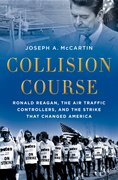By Joseph McCartin
As the Occupy Wall Street (OWS) movement gathers momentum in New York and around the country, one of its most interesting features has been the growing number of union members at the protests. For understandable reasons, unions have traditionally avoided close involvement with demonstrations as spontaneous as OWS. American unions, unlike, say, their French counterparts, tend to be conservative about street demonstrations. But labor suddenly seems open to new influences in this autumn of discontent. One does not need to look far to see why: organized labor finds itself in a dire position today, more difficult than any it has faced in generations, for at this moment in its history both of the pillars on which the movement was built over more than a century – collective action in the workplace and political action at the ballot box – seem to be cracking, unable to address the scope of the problems workers are presently facing.
While many observers focus on the declining percentage of workers who are members of unions as the best barometer of the labor movement’s health, a more accurate measure is labor’s seeming inability to pressure employers to improve the wage bargain, winning for workers a fair share of rising productivity in the form of wages and benefits. Here labor’s story is much bleaker than the eroding union density figures indicate. Between 1989 and 2010, U.S. productivity grew by 62.5 percent. But wages adjusted for inflation grew only 12 percent over this period. Real hourly compensation (wages plus benefits) grew slightly more (20.5 percent for state and local workers and 17.9 percent for private-sector workers), but still trailed productivity growth. These numbers help explain why the wealthy 1 percent decried by OWS has done so well over recent years, while most working people have felt pinched.
Unfortunately, the Great Recession is dramatically exacerbating this problem. Even though the economy has been growing (albeit slowly) and unemployment has come down since 2009, median income has continued to fall during the “recovery” and is down 6.7 percent over the last two years.
Labor has been unable to resist the downward pressure on wages and benefits in part because it has largely lost the ability to use its tool of last resort in labor-management conflicts: the strike.  As my new book makes clear, ever since Ronald Reagan broke a strike by nearly 12,000 high skilled members of the Professional Air Traffic Controllers Organization (PATCO) in 1981 (an act later emulated by many private sector employers), unions have been increasingly reluctant to strike. The number of U.S. workers who participated in walkouts dropped by 98 percent between 1952 and 2010, and shows little sign of turning around.
As my new book makes clear, ever since Ronald Reagan broke a strike by nearly 12,000 high skilled members of the Professional Air Traffic Controllers Organization (PATCO) in 1981 (an act later emulated by many private sector employers), unions have been increasingly reluctant to strike. The number of U.S. workers who participated in walkouts dropped by 98 percent between 1952 and 2010, and shows little sign of turning around.
But it is not just workers’ collective power that has ebbed; labor’s efforts to influence mainstream politics have also been frustrated. Having expended vast resources to win back the House of Representatives for Democrats in 2006 and elect Barack Obama to the presidency two years later, unions received little in return. When the effort to pass labor law reform bogged down in the Senate, president Obama scarcely exerted himself. In his dealings with Republicans on the debt ceiling and taxes Obama has proven more solicitous of deficit hawks and independent voters than his labor supporters. And if he is able to pass any jobs bill at all, it is likely to be more heavily weighted to tax cuts than unions would like.
Nor is there any sign that mainstream politics can relieve the problems that afflict the labor movement in the year ahead. Now that the U.S. Supreme Court has opened the doors to unlimited corporate funding of political campaigns through its Citizens United decision, labor will have to pursue its political agenda in 2012 on a playing field sharply tilted to the advantage of corporate interests.
Given all of this, it is not surprising that unions are now warming to a protest movement that began among young followers of Adbusters, a movement of a self-described “global network of culture jammers and creatives working to change the way information flows, the way corporations wield power, and the way meaning is produced.”
Generational, cultural, and political differences will no doubt complicate any effort to build an enduring alliance between labor and the protests, which include people of widely varying political philosophies. And whether the protests can generate a sustainable movement is too soon to say. But the very fact that labor unions are beginning to join young OWS protestors just blocks from the site where hard-hat clad construction workers battled long-haired anti-war protestors back in 1970 is an indication this is more than an alliance of convenience. Something quite significant might be happening before our eyes.
Joseph A. McCartin is Associate Professor of History at Georgetown University and an expert on 20th century US labor issues. His most recent book is Collision Course: Ronald Reagan, the Air Traffic Controllers, and the Strike that Changed America.



[…] Why labor warms to the Wall Street protests (oup.com) […]